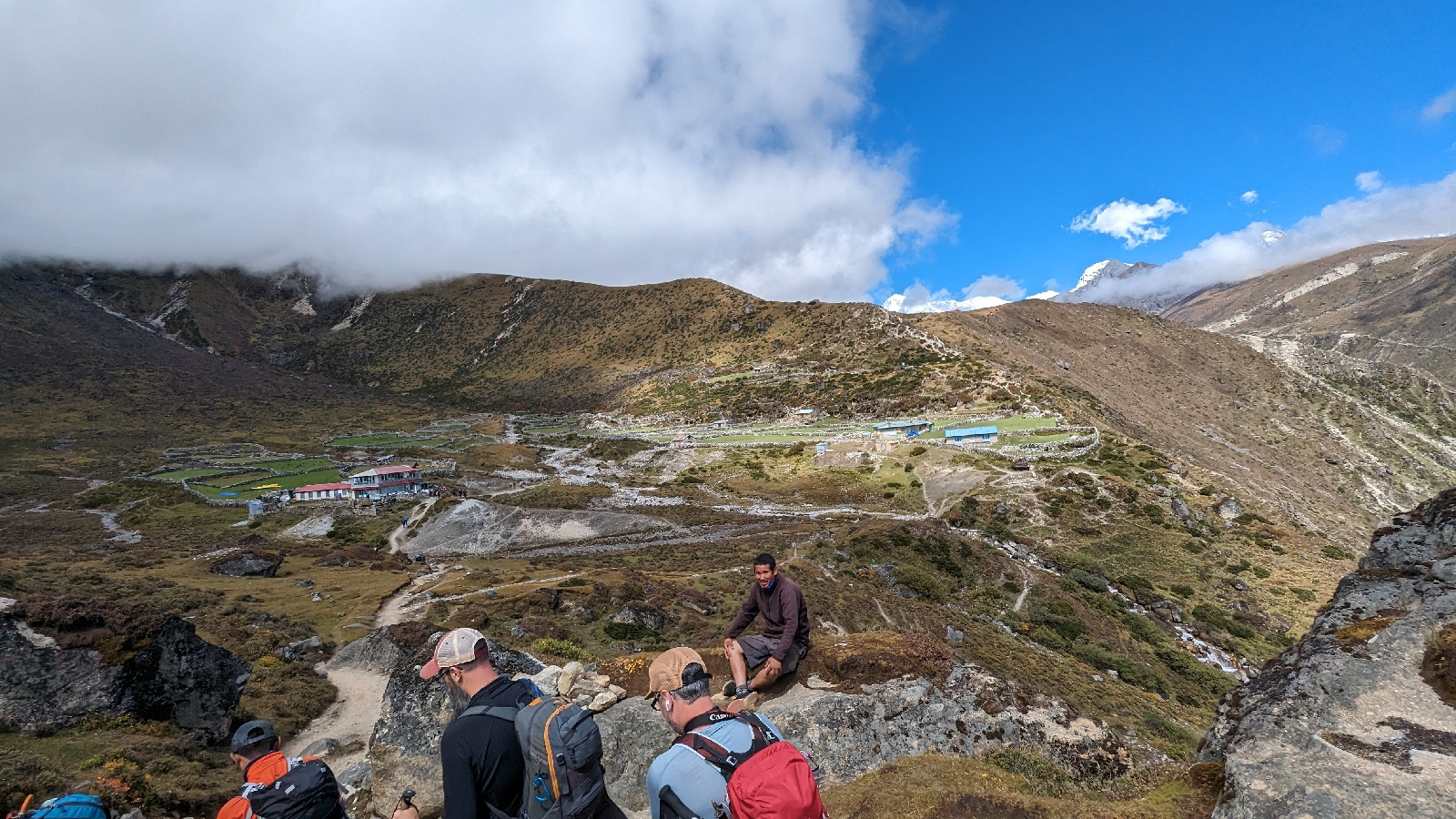As the first light of day broke over the horizon, we awoke to a spectacular sight from our cozy haven at the Yetti Inn in Dole. But what really caught our attention were the helicopters zipping in and out for drop-offs and pickups before and after breakfast. An exhilarating sight, indeed!
Trekking Higher, Trekking Shorter
As we began our trek for the day, we noticed a curious pattern – the higher we ventured, the shorter our treks became. It's all part of the grand plan to help our bodies acclimatize to the increasing altitude. Trekking to our first stop, Lusa, took us just two hours, where we indulged in the most divine mango tea, a unanimous favorite among us.
From Lusa to Taehindle Lodge: A Flavorful Trek
Our trek continued to Taehindle Lodge, a mere hour away. After checking in, we savored some delightful tea and a hearty lunch before gearing up for a viewpoint hike. When we began the ascent, the viewpoint was enshrouded in mist, offering an otherworldly experience. While we couldn't see everything clearly, the thrill of hiking through the mystical fog was an adventure in itself. We then made our way back to the lodge, eager for more learning!
Jonathan's Seminar: Deciphering the Atmosphere
Jonathan took the stage to unravel the mysteries of how the atmosphere impacts our bodies, and he didn't spare any Celsius degrees in the process!
His mission? To help us understand why we feel the way we do at these elevations. The atmosphere at higher altitudes undergoes changes in pressure and the available oxygen (O2). At sea level, there's roughly 20% oxygen. Astonishingly, this percentage remains consistent regardless of elevation. However, what changes is the boiling point of water due to vapor pressure. At sea level, water boils at 212°F (100°C), but here in the Himalayas, where the air pressure is lower, it boils at 184°F (84°C). On the summit of Gokyo, it's even lower at 175°F (80°C), and on Everest, it's a mere 150°F (66°C). These variations arise from the air pressure pushing down on us at different altitudes.
Two relationships change significantly at higher elevations – pressure and available O2. It's the non-linearity of these changes that can pose challenges for climbers. Teahouses, for instance, are strategically placed to account for these factors. Even planes require longer runways for takeoff at higher altitudes due to these pressure differences. Additionally, there's a maximum elevation cap for planes.
The pressure at sea level amounts to 15 pounds per square inch (psi). As we ascend, the partial pressure of oxygen (O2) decreases. At sea level, it's around 3 psi, while on Everest, it's as low as 1 psi.
Kim's Dive into Altitude-Induced Pulmonary Edema
Kim took the reins to shed light on the effects of decreasing pressure on our bodies. One of these effects is pulmonary edema, which occurs due to constricted blood vessels that lead to leakage from the lungs. This leakage results from increased pressure on the walls of blood vessels. Normally, our blood maintains a pH of about 7.4, but in high-altitude environments, it tends to become more alkaline.
A Closer Look at Altitude Sickness
Here, let's delve into the three types of altitude sickness:
1. **Acute Mountain Sickness (AMS)
Symptoms include headache, fatigue, dizziness, and nausea.
2. **High-Altitude Cerebral Edema (HACE)**: This severe condition is characterized by symptoms such as confusion, stumbling, and incoherence.
3. **Altitude Pulmonary Edema**: As explained by Kim, this condition leads to fluid accumulation in the lungs.
Hike High, Sleep Low: A Blood-Boosting Strategy
The mantra "hike high, sleep low" is the key to producing more red blood cells, enhancing our bodies' oxygen-carrying capacity. This strategy promotes blood cell production, which translates to more oxygen being delivered to vital organs. It also involves the production of chemicals in hemoglobin to help release oxygen and make blood thicker. At very high altitudes, individuals may even require blood removal due to excessively thick blood.
Jonathan's Personal Altitude Saga
Jonathan shared a personal anecdote about his battle with altitude sickness. On one expedition, he contracted food poisoning at 15,500 feet, which pushed his body to its limits. Altitude sickness felt like his brain was caught in a vice due to the mounting pressure. It was only after his fever broke three hours later that he started to return to normal. However, on the way down, he experienced High-Altitude Pulmonary Edema (HAPE), a condition that could only be treated by descending rapidly.
Dinner and Bundling Up: Facing the Cold
With the day's lessons complete, we prepared ourselves for our coldest night yet. We gathered our provisions and bundled up tightly to fend off the plummeting temperatures. It's only going to get colder from here, but we're ready for whatever the Himalayas have in store for us!
Stay tuned for more tales of adventure, exploration, and altitude-induced insights as we journey further into the heart of the Himalayas!
















No comments:
Post a Comment